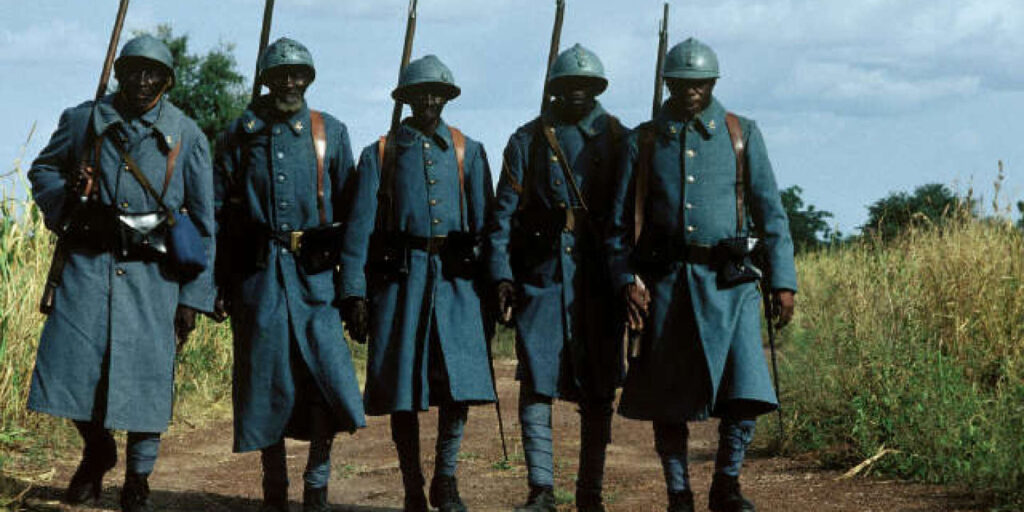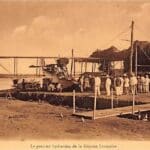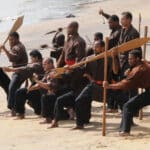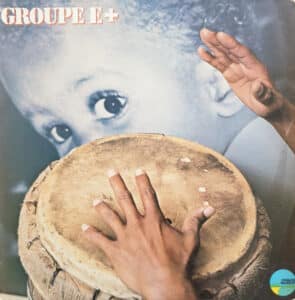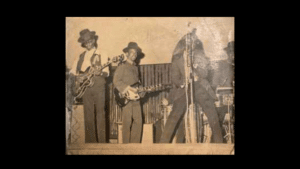The context
Military service was established in the four "old" colonies (Guadeloupe, French Guyana, Martinique, Réunion) from 1913.
At the dawn of the "Great War", August 1, 1914, when the order to mobilize arrived, many French West Indian-Guyanese ran for office and wanted to go and defend the "Motherland".
Indeed, 66 years after the Abolition of Slavery (1848) in the French colonies, the new citizens are keen to prove their recognition, their attachment to France and to act as "good Frenchmen".
The ultimate act of citizenship remains the "blood tax", i.e. military obligation..
But not everyone can be mobilized:
In the West Indies, Indian descendants are not mobilized because they are not yet French citizens.
In French Guyana, foreigners (Chinese, Lebanese, Indians), Bushinengues, Amerindians and convicts are not affected by the mobilization..
Despite the many exemptions due to illness, the number of people recruited is estimated at:
• Guadeloupe: 6,345
• French Guyana: 1,610 (including 530 West Indians )
• Martinique: 8788
• TOTAL: 16743
Aged 18 to 45, aspiring Antillean-Guyanese soldiers received rapid military instruction before leaving for the front, from 1915.
It is in Martinique that the departures for Europe take place for the antillo-guya soldiersIt is in Martinique that the departures for Europe take place for the French West Indian-Guyanese soldiers and some men from the Caribbean island of Saint-Thomas.
The crossing is done by boat and lasts 12 days. born and some men from the Caribbean island of Saint-Thomas.
The crossing is done by boat and lasts 12 days.
They joined French troops and not colonial troops (North Africa, Sub-Saharan Africa, Indochina) and fought in mainland France and in North Africa.
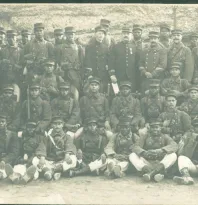

Nearly a third of these soldiers lost their lives either on the European front (battles of the Marne, Somme, Verdun) or on the Eastern front (battles of the Dardanelles).
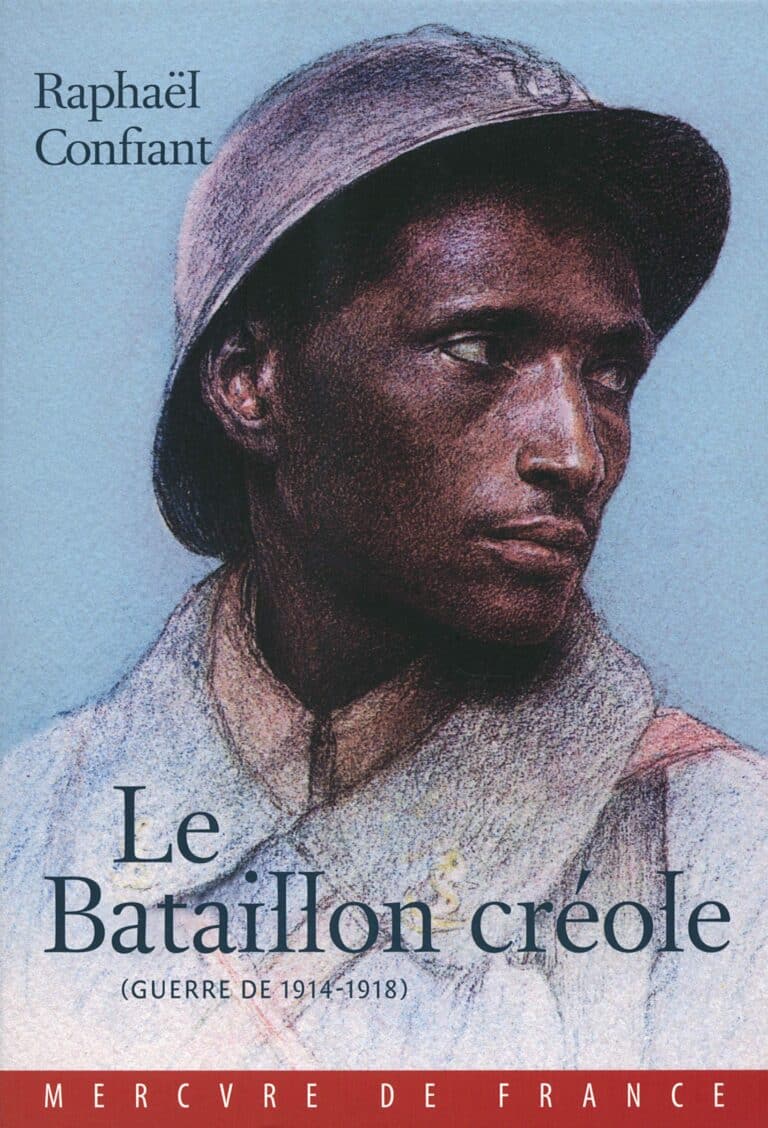

Military preparation through singing
During his military training, soldiers learn to handle weapons, march in step and live in community.
The learning of songs punctuates daily life.
• establish better group cohesion
• give courage and galvanize the troops
• rekindle the patriotic spirit
• to express the life of a soldier (difficult daily life, couples separated by war…)
• to entertain the soldiers.
The artistic dimension is only incidental.
There are several categories of soldiers' songs:
• Patriotic songs
• Marching songs: often ribald lyrics
• Bivouac songs: nostalgic lyrics
• Songs of parades and parades
• Traditional songs: History and unity of France
• Drinking songs : to exorcise fear and violence.
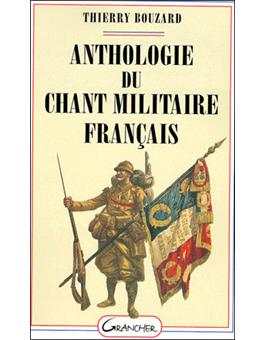

Oral transmission of French West Indian-Guyanese songs
Each corps, each troop has its register.
The sale of military songbooks is growing. Some literate soldiers create their own song books. They copy the learned songs, adapt them to their desire, invent them...
Unfortunately, there are no military booklets for overseas soldiers.
Not being integrated into the colonial troops, the latter learned the songs of the French troops.
It is very likely that in addition to the learned songs, they also invented their own songs.
But the vast majority cannot read or write, transmission is done orally. A third of the French West Indian-Guyanese soldiers having died on the front, this oral transmission disappeared with them.
Despite everything, some traces remain of certain songs.
- Some songs refer to the eastern front, where many French West Indians fought, such as the famous “Sé an Dardanelles“.
- The Dardanelles have remained in the collective memory of the French West Indian-Guyanese as a trauma, because life is hard there due to the lack of water and supplies, the stifling heat in summer, the freezing cold , non-existent permissions.
- The fights in Alsace and Lorraine resonate as far as the French West Indies. In the 1960s, the Martinican bèlè singer Ti Raoul Grivalliers sang Sé l'Alsace se Lorraine. We find him with the Groupe De Morne Des Esses.
The Creole Anthem
The Creole Anthem is a song of rallying and pride that the French West Indian-Guyanese soldiers sang before going to the front.
Here are the words:
Comrades, the bugle sounds,
There must be no one missing.
Now is your time, blood tax
Forward for the regiment
From Saint-Martin to French Guyana
From Morne Vert to Savane
France, all the children are here
We are going to leave bold soldiers
Forward to the metropolis!
Goodbye Mum darling
We're going to serve our country
Hold me tightly in your arms
Praying to God for your little guy
And you, my dark-eyed brunette,
My idol, keep our sweet hopes in your heart
While we do our homework!
Chorus
Let's sing the Creole anthem in chorus
The Guyanese the West Indians
Are proud to be French soldiers
Schoelcher may your souls quiver
Your dearest wishes come true
Whether dark or light be the skin
For us there is only one flag
Noble standard, fly to glory
Bring back victory
Until the death, in the field of honor
We will defend the three colors.
MORE INFORMATION
Sabine Andrivon: a French historian specializing in the military history of Martinique
The Creole Battalion (War of 1914-1918): Raphael Confiant
